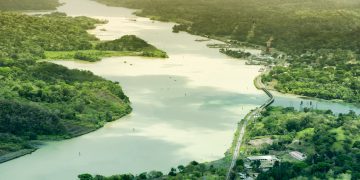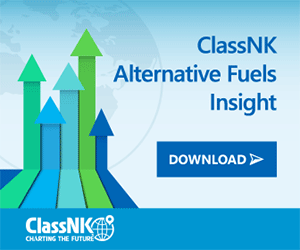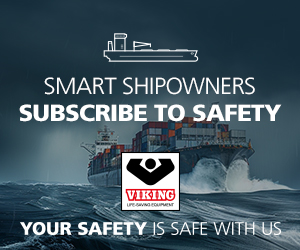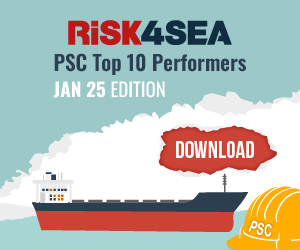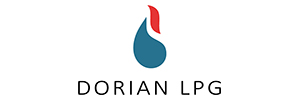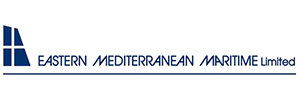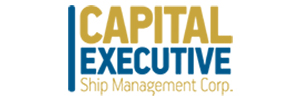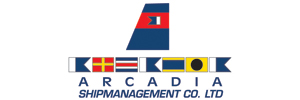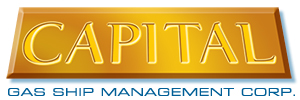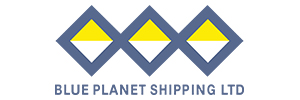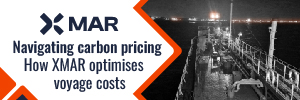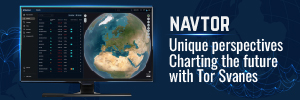In an exclusive interview to SAFETY4SEA, Martin Crawford-Brunt, Emissions Lead at the Baltic Exchange, outlines what the maritime industry needs in order to advance decarbonisation with greater confidence and clarity.
He emphasizes that one of the key challenges is ensuring crews are properly prepared for the operational complexities of alternative fuels, such as biofuels and hydrogen. These fuels require different handling and monitoring procedures compared to traditional fuels. To address this, the industry must seize the opportunity to transform crew training—upskilling the workforce to manage new technologies, fuel systems, and emission reduction strategies. “By equipping personnel with the right knowledge, we can drive more effective and efficient decarbonisation efforts,” Martin said.
SAFETY4SEA: What are the biggest challenges the maritime industry faces in promoting the adoption of green fuels in shipping?
Martin Crawford-Brunt: The transition to green fuels comes with some big hurdles, including availability, cost, and infrastructure. Right now, production of green ammonia, methanol, and hydrogen is still in its early stages, and the supply chains needed to make them widely accessible aren’t yet developed enough. Additionally, uncertainty around regulations and fuel pricing makes it tough for shipowners to commit to long-term investments. What is really needed is a clearer set of incentives and a stable regulatory framework to give the industry the confidence to move forward with decarbonisation.
S4S: How is the Baltic Exchange evolving to support sustainable shipping initiatives, and what are your top priorities in this regard?
M.C.B.: Baltic Exchange is committed to enhancing transparency and data-driven decision-making in sustainable shipping. To support the industry’s transition, we’ve introduced our FuelEU Maritime Calculator, which has recently expanded to include biofuel blends, and maritime’s first-ever Fuel Equivalence Converter to help shipowners assess emissions and compliance costs. These initiatives align with our key priorities: developing benchmarks and indices that reflect evolving regulations like FuelEU Maritime and providing practical tools to help shipowners and charterers navigate the complexity behind the commercial impact of these regulations.
S4S: What motivated the inclusion of biofuel blends in the Baltic Exchange’s FuelEU Maritime Calculator?
M.C.B.: The inclusion of biofuel blends in the Baltic Exchange Emissions Calculator was driven by industry demand for clearer cost insights under new regulations. Since green fuels are expensive, they will likely be blended with fossil fuels to achieve compliance. To support this transition, we introduced a blend capability, allowing users to estimate the financial impact of different fuel mixes. This helps shipowners, traders, and charterers navigate the complexity of FuelEU Maritime and EU ETS while making informed decisions. The tool provides a transparent, data-driven comparison of costs and emissions across fuel options, ensuring market participants can adapt efficiently to evolving sustainability requirements.
S4S: Are there any specific fuel blends that you see gaining more traction among shipowners?
M.C.B.: Currently, biofuels, LNG, and methanol are gaining traction, with biofuel blends being particularly appealing due to their compatibility with existing engines. Methanol is also emerging as a popular choice, driven by strategic investments from major shipping companies. Looking ahead, ammonia and hydrogen will likely play a greater role, but their widespread adoption will depend on advancements in infrastructure, safety protocols and training.
S4S: What advice would you give to industry players on effectively complying with the FuelEU Maritime regulation?
M.C.B.: I’d recommend that industry players start by evaluating their fleet’s fuel efficiency and emissions to understand where they stand. It’s also important to work closely with fuel suppliers, charterers, and regulators to stay updated on the latest changes and explore alternative fuels and blends.
S4S: Do you anticipate any regulatory changes that could further impact the costs of different fuel types?
M.C.B.: Yes, we expect tighter emissions standards and expanding carbon pricing to keep shaping fuel costs. Regulations like the EU ETS and FuelEU Maritime will likely push up fossil fuel prices as carbon costs rise. At the same time, green fuels such as biofuels, hydrogen, and ammonia, will probably stay expensive in the short term, though prices are expected to come down as technology and supply chains scale up. The regulatory landscape will keep evolving in response to the industry’s decarbonisation efforts, so staying flexible, proactive and informed will be key.
S4S: What are the biggest opportunities and challenges related to the human element in shipping’s decarbonisation journey?
M.C.B.: One of the biggest opportunities is the potential for crew training and upskilling in new technologies, fuel management, and emission reduction strategies. By equipping personnel with the right knowledge, we can drive more effective and efficient decarbonisation efforts. However, a major challenge lies in ensuring that crews are adequately prepared for the operational complexities of alternative fuels, such as biofuels and hydrogen, which require different handling and monitoring procedures. Ultimately, fostering collaboration and continuous education will be essential for overcoming these challenges.
S4S: What is your wish list for the industry, regulators, and other stakeholders in addressing the critical issue of decarbonisation?
M.C.B.: I’d like to see more open discussion within the industry about the commercial implications of the various decarbonisation regulations on fuel choices. With the current geopolitical situation we simply can’t rely on the enforcement required to ensure a level playing field in a global industry. Our regulators struggle to develop effective emission regulation as they grapple to understand the sector specific challenges and opportunities. Commodity shipping is materially different from the containerised trades for example. Unfortunately a “one size fits all” approach to “shipping” brings many unintended consequences that may perversely increase emissions, while also adding to overhead and cost unnecessarily. Given the growing complexity of regulation, Baltic Exchange has built the tools to quickly assess the commercial implication of new regulation like ETS and FuelEU Maritime. Blended or green fuels can also be tested against existing fossil based fuels. This allows all stakeholders and market participants to quickly assess the many fuel options spoken about against various fuel price scenarios. The results of these comparisons are likely to surprise the regulators themselves.
S4S: How can industry stakeholders best collaborate to support sustainable development? How are you fostering collaboration and knowledge-sharing in this space?
M.C.B.: Our industry’s emissions regulations are horribly complex. Even the experts on emissions regulation struggle to understand the cost implications of these regulations. Few but the largest companies can afford to employ teams of emissions specialists to calculate added costs and investigate the practical options for their trade. Baltic Exchange has created this capability for free with the smaller company in mind to provide these voyage cost estimates, including new emission regulation, quickly and easily. Bringing an informed perspective of the commercial implications of new regulation puts us all in a better position to find the opportunity to collaborate for mutual benefit. Sadly, current regulation like the CII does not consistently represent “what good looks like” in terms of efficiency or emissions. This makes it unsuitable for effective performance-based contracts between charterers and owners. The key is to provide a more consistent indicator of transport efficiency by route. This will make it possible to measure voyage performance and create a mechanism that rewards better performance relative to a trusted and known baselines.
S4S: Are there any new projects or plans you would like to share with industry stakeholders?
M.C.B.: We’re always evolving our tools to support the industry’s transition to greener shipping. The Baltic Exchange Emissions Calculator is constantly being refined to give shipowners and charterers a clearer view of compliance strategies, emissions performance, and cost implications. At the same time, we’re expanding and developing our emissions benchmarks to improve market transparency and help the industry make smarter, data-driven decisions. Engaging closely with stakeholders ensures our tools stay relevant as regulations and market needs evolve. By continuously refining our benchmarks and analytical tools, we’re helping the industry navigate decarbonisation with greater confidence and clarity.
The views presented are only those of the author and do not necessarily reflect those of SAFETY4SEA and are for information sharing and discussion purposes only.






























